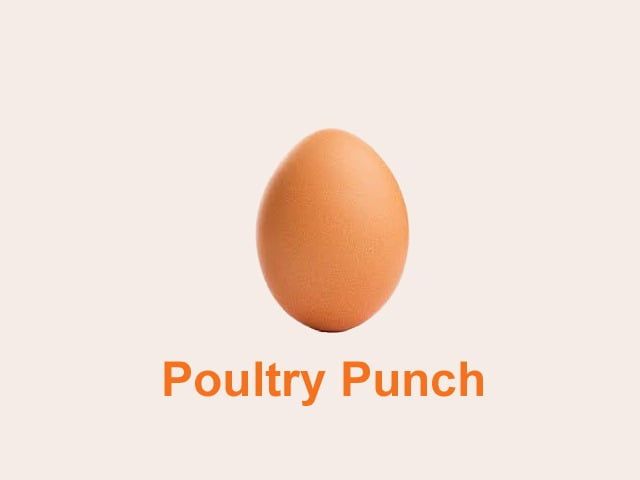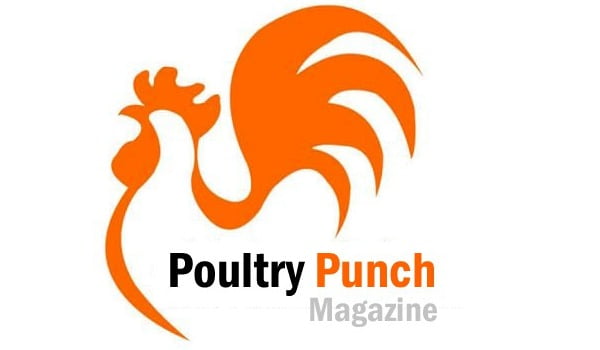NANO PARTICLES: A NEW FRONTIER IN POULTRY SCIENCE

K. Shibi Thomas, R. Amutha, M. R. Purushothaman,
P. N. Richard Jagatheesan, S. Ezhil Valavan and V.Jayalalitha
Veterinary University Training and Research Centre,
Tamil Nadu Veterinary and Animal Sciences University (TANUVAS) 7/2, Kozhi Pannai Road, Kottapattu,
Trichy – 620 023 – Tamil Nadu
This era may be conferred as the era of nano technology due to the use of nano particles in diversified purposes such as in the fields of medicine, engineering, information, environmental technology, pigments, food, electronics appliances, biological, and pharmaceutical applications. Nano materials are also used in the fields of biology (molecular and cellular), biotechnology, mineral nutrition, physiology, reproduction, pharmacology in both animal and human models. Hence, nanotechnology and in turn, the nano-sized materials are having multifaceted use in agriculture and food systems. The applications of nanomaterials in Agriculture and Animal Husbandry are of utmost importance since the Indian economy is predominantly depending on agriculture.
Nano technology is concerned with materials whose structures exhibit significantly novel and improved physical, chemical, and biological properties due to their nano-scaled particle size. This can be defined as a research and development aimed at understanding and working with seeing, measuring, and manipulating matter at the atomic, molecular, and supramolecular levels.
National Nano technology Initiative defined Nano technology as “Utilization of structure with at least one dimension of nanometer (nm) size for the construction of materials, devices or systems with novel or significantly improved properties due to their nanosize”. In simple terms, nano mineral particles refer to the particles having a particle size of the range of 1-100 nm. At this scale, the physical, chemical, and biological properties of materials differ fundamentally and often unexpectedly. The nano-sized particles are having higher potential than their conventional sources and thus reduce the quantity required.
Effect of nano particles on the performance of birds
In the recent past, various strategies have been explored to reduce the feed cost of poultry by reducing the cost of mineral supplementation. Nano form of supplementation increases the surface area which possibly could increase absorption and thereby utilization of minerals leading to reduction in the quantity of supplements and ultimately reduction in feed cost. Mineral nanoparticles will be helpful in reducing the excretion of unutilized minerals, thereby minimizing the environmental pollution especially in large scale poultry farming. This action may be due to the effect of ionic silver on harmful bacteria in intestine and resulted in healthy hindgut and better absorption of nutrients.
Nano particles acts on the organisms in the gut (gut microflora). Nano-silver is an effective killing agent against a broad spectrum of Gram negative and Gram positive bacteria including antibiotic-resistant strains. Gram negative bacteria includes genera such as Acinetobacter, Escherichia, Pseudomonas, Salmonella and Vibrio. Silver nanoparticles anchor and penetrate the cell wall of Gram negative bacteria.
Silver in the form of nano particles recorded a significant improvement in the weight gain, feed intake and feed conversion ratio of broilers fed Nanosil (silver nanoparticles). Nanocapsule was formulated using turmeric extract and industrial chitosan as the polymer and sodium-tripolyphosphate as cross linker by and increased true metabolizable energy and nutrient digestibility so it can be an alternative for broiler chicken feed additive.
Dietary mixture of selenium nano-particles and Calcium phosphate nanoparticles resulted in an increase in body weight gain and the feed conversion ratio was significantly better in broiler performance.
Effect of nanoparticles in egg production
Supplementation of nano chromium picolonate, nano germanium and nano selenium on egg production and best feed conversion ratio of layers. Improved egg quality, egg weight, albumen quality, increased minerals accumulation in tissues albumen per cent, albumen index and Haugh unit score significantly increased and yolk and shell per cent significantly decreased.
Effect of nano particles on the gastro intestinal tract
Silver compounds have been historically used as anti microbial, antifungal and antibacterial. Bacterial cell walls are disrupted after treating with Ag-nano. The possible effects of metallic silver and silver ions over microorganisms from the digestive tract are scarcely documented. The selective response of silver in such ecosystem, with a wide diversity of species that can exert either symbiotic (positive) or pathogen (negative) effects, deserves further attention.
Effect of nano particles on blood parameters
These effects may be related to oxidative stress that caused peroxidation of fat and release of free radicals in the body. Research showed function of mitochondria that exposes to nano-particles significantly decreased the mitochondria which seem to be sensitive targets to cytotoxicity of silver nano-particles.
Nano particles in higher concentration are necrotic to cells, leading to rapid cell membrane rupture. Nanoparticles of silver induces oxidative stress and adversely affects the structure and peroxidation of lipid in the cell membranes and function, rupture of fat membrane structure changes the concentration of different serum of lipid.
Absorption of nano particles from gastro intestinal tract, entered to blood systemic circulation, and potentially, interact with different metabolites such as: plasma proteins, coagulation factors, platelets and red and white blood cells. For this reason, nanoparticle silver perhaps induces oxidative stress and adversely affects the structure and physiology of the cells, oxidative metabolism, fat membrane structure, and function. Nano particles acted as factors of inducing oxidative stress by means of change of concentration of related enzymes.
Effect of nano particles on organ
Antimicrobial properties of nanoparticles affected microbial population and probably changed the proportion between pathogen and nonpathogen organisms in the gut. Nanoparticles affect some compounds of bacterial membrane leading to structural changes, dissipation of the proton motive force and in consequence to the death of microorganisms.
Bursa is one of the organs related to immune system with B-lymphocyte production. In poultry, the bursa of Fabricius is the primary lymphoid organ responsible for the establishment and maintenance of the B-lymphocyte compartment. Nanoparticles can anchor and penetrate to the cell wall of gram negative bacteria and impaired chain electron of transmissions and caused cell death.
Nanoparticles increase the relative weight of small intestine (SI) and liver of birds. It may be due to antimicrobial effect of SNPs. Nanosilver acts as an effective killing agent against a broad spectrum of gram negative and gram positive bacteria including antibiotic-resistant strains such as Acinetobacter, Escherichia, Pseudomonas, Salmonella, and Vibrio. This situation indirectly affects on digestion and absorption of nutrients in small intestine and relative weight of it. Absorption of nanoparticles from gastro intestinal tract, enters to blood systemic circulation and interact with different metabolites such as: plasma proteins. Nanoparticles induced oxidative stress; therefore, this condition probably has negative effects on metabolic pathway and impaires the utilisation of nutrients by birds.
Effect of nano particles on diseases
Administration of silver nano particles in drinking water kills coccidia in broiler intestines in terms of oocysts excreted. Nanoparticles enhanced mucosal delivery of live New Castle disease vaccine (NDV) by chitosan nanoparticles which induced better protection of immunized specific pathogen free chicken compared to live NDV vaccine strain La Sota and the inactivated NDV vaccine.
Supplementation of nano zinc oxide in broilers resulted in low density lipoprotein, triglyceride and cholesterol and increased high density lipoprotein when compared to the control. This may be due to oxidative stress reduction and per oxidative membrane lipids cells of birds that fed diet containing nano zinc oxide particles.
Nano-selenium elicited a little degree of immunity, but they could not inhibit the anamnestic response and infection. Zinc oxide nanoparticles supplementation controlled mortality due to ascites in broiler chicks.
Effect of nano particles on minerals
In ovo injection of nano silver, thyme and savory extracts in broiler breeder eggs showed significant increase in ash, calcium and copper of bones in nano silver supplementation.
Effect of nanoparticles on chicken embryos
Chicken embryo is a unique biological model because it is independent from mother organism and there is no external nutrient supply. In ovo administration of nanoparticles of Ag deposited in embryo’s bone did not affect structure and mechanical properties of the bone. There was a tendency of increasing mineral content, indicating that nanoparticles may influence bone mineralization
Effect of nano particles as disinfectant in hatchery and poultry processing plant
Nano silver preparation applied for the disinfection of eggs and hatchers reduced microbiological contamination. The preparation showed bactericidal and fungicidal effectiveness comparable to UV radiation, and its effectiveness increased throughout the incubation. In the case of fungi, on the 7th day of incubation, fogging with nanosilver gave better protection to the surface of eggs than irradiation with UV. Very good results were achieved in the case of organic gaseous contaminants. After application of the nanosilver preparation, these levels decreased by 86%. The level of contaminants in the air inside the incubator decontaminated with UV was 40% higher than in the incubator disinfected with nanosilver.
Proper egg incubation conditions during hatching are very important and result in effective hatching and healthy chicks. Intensively running metabolic processes and embryo respiration require that the air inside incubator contains a sufficient amount of oxygen. Gases released during the incubation have to be removed from the apparatus, because excessive amounts can lead to poisoning and embryo decay, so proper air exchange is of great importance. The application of nanosilver may be used to optimise the process of incubation. Nanosilver is an element supporting the elimination of gaseous contaminants.
Effect of nanoparticles in package material for eggs and meat
Microbial contamination is considered as a serious issue in pharmaceutical and food packaging industries. The surface centered microbial infections play an important role in food spoilage, spread of food-borne infections and bio-fouling of materials. The worldwide trend in the fast growing poultry industry, especially in developing nations, is towards the development of alternative strategies to manage infectious diseases. Eggs are a wholesome nutritious diet. Its affordability and ease of availability has made it a protein-rich food source to all sections of the society. Consumption of good quality eggs is thus of paramount importance. In recent years, disease outbreaks associated with bacterial contamination of egg and egg products were reported worldwide. Several studies have reported a high incidence of bacterial contamination in eggs stored in retail outlets on reusable egg trays without proper hygiene. It is also suggested that reduction of bacterial contamination will help to increase the shelf-life of the eggs. Antimicrobial paper egg trays by using silver nano particles. For the surface coating, initially, the silver-doped colloidal solution was prepared using chitosan, gelatin with silver nano particles and it was doped on paper egg trays by using airless spray method. The gelatin and chitosan act as adhesives as well as colloidal stabilizers to fix the silver nano particles.




